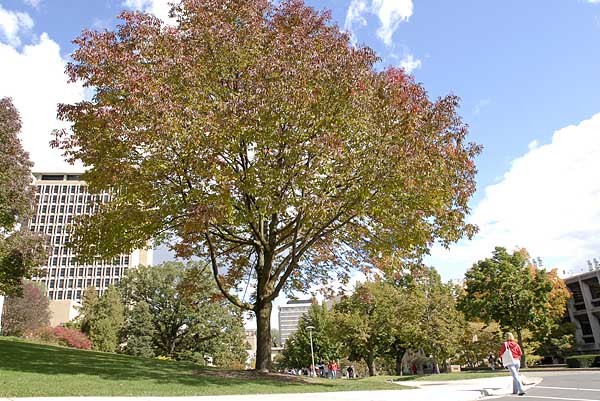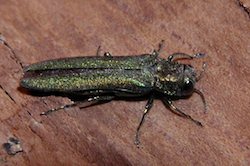Campus begins treating for emerald ash borer

Students walk past an autumn purple white ash growing near Linden Drive in front of the School of Human Ecology. It is one of 17 ash trees on campus that crews will soon treat for emerald ash borer.
Photo: Michael Forster Rothbart
Crews will soon begin treating 17 ash trees across campus for emerald ash borer, an exotic wood-boring beetle that is known to attack ash trees in North America.
In November 2013, it was confirmed found in Madison.
The adult beetles nibble on ash foliage but cause little damage. The larvae feed on the inner bark of ash trees, disrupting the tree’s ability to transport water and nutrients.
Trees are being treated as a precaution. The treatment involves putting ports that are left in trees permanently that contain chemicals to fight emerald ash borer.
“We want to be proactive and preserve as many of our beautiful trees across campus as possible,” says Gary Brown, director of campus planning and landscape architecture. “About 10 percent of our main campus trees are currently ash and we are trying to save and protect the highest quality ones from the borer.”
Many of the ash trees to be saved are along Observatory Drive with others near WARF, the School of Human Ecology and other parts on campus. Healthy trees were selected for treatment, based on the fact that they were likely to be saved.
Campus has treated ash trees for emerald ash borer in the past. This latest round should be completed by mid-September.
Tags: environment

